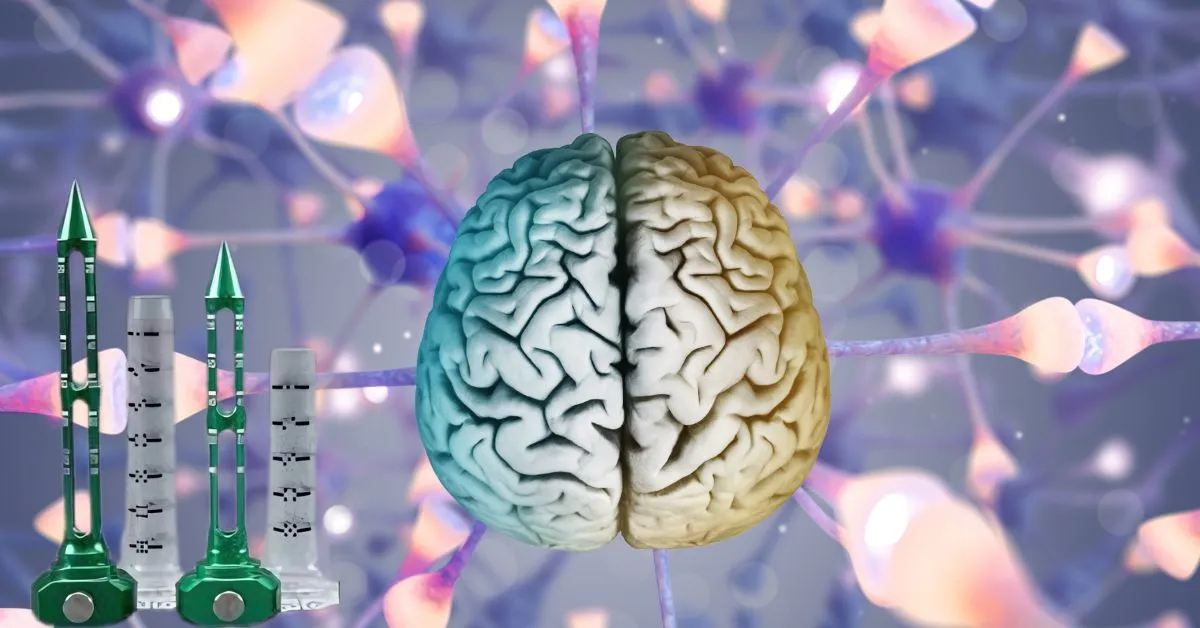Brain surgery has always been a complex and delicate field, with certain conditions once deemed inoperable due to the risk of damaging critical brain tissues. However, new advancements in surgical techniques have started to shift the landscape. One such breakthrough is BrainPath Junction, a cutting-edge approach that leverages the natural folds and pathways of the brain to treat deep-seated tumors and blood clots. This technique represents a significant step forward in minimally invasive brain surgery, offering hope to patients with previously untreatable conditions.
The Challenge of Traditional Brain Surgery
For years, neurosurgeons faced the challenge of accessing tumors or clots deep within the brain. These areas are surrounded by delicate structures that control vital bodily functions, such as movement, speech, and memory. Traditional surgical techniques often involve cutting through these tissues, which could result in significant damage, loss of function, or a long recovery time.
Moreover, deep brain surgery often poses risks of excess bleeding, infection, and other complications. As a result, many tumors or clots deep within the brain were deemed inoperable, leaving patients with few treatment options. This is where BrainPath technology steps in, providing a more refined, less invasive solution to these challenges.
What is BrainPath Technology?
BrainPath is a neurosurgical technique designed to safely navigate through the natural pathways of the brain, minimizing damage to healthy tissue. The system uses a specialized device, allowing surgeons to reach tumors or clots without cutting through vital areas. It uses advanced imaging and navigation systems to create a precise surgical corridor, allowing access to previously unreachable areas.
Unlike traditional brain surgery, which often requires large incisions, BrainPath only requires a small opening about the size of a dime. Through this minimally invasive entry point, surgeons can access and remove abnormal tissue with greater precision, resulting in less trauma to the brain.
How Does the BrainPath System Work?
The BrainPath system begins with advanced imaging techniques such as MRI or CT scans to map out the brain’s natural folds, fiber tracts, and the location of the tumor or clot. This detailed map allows the neurosurgeon to chart a safe path through the brain, avoiding sensitive areas.
The system’s core component is the BrainPath obturator, a cone-shaped tool that gently displaces brain tissue as it moves along the mapped-out path. This obturator is inserted through the small opening in the skull, following the natural folds of the brain to the targeted area. Once in place, the obturator is removed, leaving behind a clear sheath that provides continuous access to the site.
With the BrainPath sheath in position, the surgeon uses the NICO Myriad® to remove the tumor or clot. This device allows for precise removal of the targeted tissue while preserving surrounding structures. The tissue can also be captured intact, allowing researchers to study it for further treatment options.
The Benefits of BrainPath Technology
BrainPath technology offers numerous benefits over traditional brain surgery, making it a preferred choice for many neurosurgeons and patients. Some of the key advantages include:
Minimally Invasive Approach
The hallmark of BrainPath is its minimally invasive nature. The surgery reduces the risk of damaging healthy brain tissue by creating a small opening and using the brain’s natural pathways. This also results in less bleeding, lower risk of infection, and faster patient recovery times.
Enhanced Precision
Advanced imaging and navigation systems ensure that the surgeon can reach the tumor or clot with pinpoint accuracy. This precision reduces the likelihood of complications and improves the chances of a successful outcome.
Faster Recovery
Because the surgery is less invasive and causes less trauma to the brain, patients often experience a quicker recovery. Many can go home sooner, require fewer medications, and experience fewer post-surgery complications compared to traditional brain surgery.
Access to Previously Inoperable Areas
One of the most significant benefits of BrainPath technology is its ability to access areas of the brain that were previously considered inoperable. This opens up new treatment possibilities for patients with deep-seated tumors or intracerebral hemorrhages that were once deemed untreatable.
Improved Safety
Following the brain’s natural folds minimizes the risk of damaging critical structures. This enhances the procedure’s overall safety, providing peace of mind for patients and their families.
Conditions Treated with BrainPath Technology
BrainPath technology has proven effective in treating previously considered inoperable or high-risk brain conditions. Some of the key conditions include:
Glioblastoma
Glioblastoma multiforme (GBM) is one of the most aggressive and deadly forms of brain cancer. It typically affects deep parts of the brain, making it difficult to treat with traditional surgery. BrainPath offers a new option for accessing and removing these tumors more precisely.
Intracerebral Hemorrhage
Intracerebral hemorrhages, or bleeding within the brain, can be life-threatening and are often located in deep areas. The BrainPath system enables surgeons to safely reach and remove blood clots, reducing the risk of further damage.
Metastatic Brain Tumors
Metastatic tumors, which spread to the brain from other parts of the body, often settle in areas that are difficult to reach. BrainPath allows for the removal of these tumors without causing significant damage to healthy brain tissue.
Traumatic Brain Injury
In cases of traumatic brain injury, where bleeding or swelling may occur deep within the brain, BrainPath offers a safer way to alleviate pressure and remove clots, improving patient outcomes.
Future Potential of BrainPath Technology
The potential for BrainPath technology extends beyond its current applications. Researchers and developers are working on integrating enhanced imaging tools and refining the system to make it even more precise. Future advancements may include performing surgeries guided by robotics or using real-time imaging to reduce risks.
Additionally, combining BrainPath with substances like 5-ALA, which helps distinguish tumor cells under ultraviolet light, could enable surgeons to remove more of the tumor while sparing healthy tissue. BrainPath could continue to revolutionize neurosurgery as research progresses by offering hope to even more patients.
Conclusion
BrainPath Junction is redefining what’s possible in brain surgery. By taking a minimally invasive approach and utilizing the brain’s natural pathways, this technology makes it safer and more effective to treat deep-seated tumors and blood clots. Its precision, faster recovery times, and improved patient outcomes make it a game-changer in neurosurgery. With further advancements on the horizon, this innovative system is poised to bring new hope to patients facing some of the most challenging brain conditions.
FAQs:
What makes BrainPath different from traditional brain surgery?
BrainPath uses the brain’s natural folds to navigate to deep-seated tumors or clots, minimizing damage to healthy tissue. It is less invasive, resulting in quicker recovery and fewer complications.
Can BrainPath treat all types of brain tumors?
While BrainPath can treat many types of tumors, it is especially useful for those deep within the brain that were previously considered inoperable.
How does BrainPath improve patient recovery?
Because the procedure is minimally invasive, patients experience less trauma, reduced bleeding, and faster recovery times compared to traditional brain surgery.
What conditions can be treated using BrainPath?
BrainPath is effective in treating glioblastomas, intracerebral hemorrhages, metastatic brain tumors, and blood clots caused by traumatic brain injuries.
Where is BrainPath currently available?
BrainPath technology is available at select neurosurgery centers worldwide, with continued expansion as more surgeons are trained.

